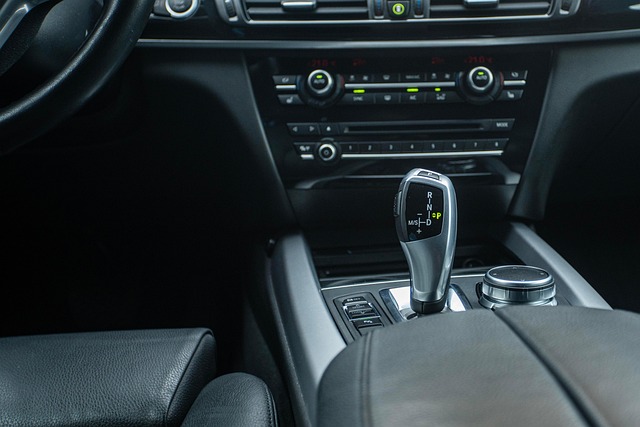# Unlocking AI’s Potential: Exploring the Limitless Applications Transforming Our Daily Lives
In recent years, artificial intelligence (AI) has emerged as a transformative force across various sectors, and the automotive industry is no exception. From smart manufacturing to autonomous driving innovations, AI is reshaping how vehicles are designed, produced, and experienced. In this article, we will delve into the key areas where AI is making significant strides in the automotive sector, highlighting real-world examples from industry leaders like Tesla, BMW, and Toyota.
## Smart Manufacturing
One of the most significant applications of AI in the automotive industry is smart manufacturing. AI technologies are revolutionizing production lines by enhancing efficiency and reducing costs.
– **Predictive Analytics**: AI algorithms analyze data from machinery to predict failures before they occur. This proactive approach minimizes downtime and extends the lifespan of equipment.
– **Robotics and Automation**: AI-powered robots are increasingly used in assembly lines, performing tasks ranging from welding to painting with precision and speed.
### Example: BMW
BMW has integrated AI into its manufacturing processes to streamline operations. The company employs AI-driven robots that can adapt to different tasks, allowing for flexible production lines that can quickly switch between models. This adaptability not only increases efficiency but also reduces waste, contributing to more sustainable manufacturing practices.
## Predictive Maintenance in Vehicles
Predictive maintenance is another area where AI is making waves in the automotive industry. By leveraging data analytics, manufacturers can monitor vehicle performance in real-time, predicting potential issues before they escalate.
– **Data Collection**: Sensors embedded in vehicles collect data on various components, such as the engine, brakes, and tires.
– **AI Analysis**: This data is then analyzed using machine learning algorithms to identify patterns that may indicate impending failures.
### Example: Toyota
Toyota has embraced predictive maintenance through its connected vehicle technology. The company uses AI to analyze data from its vehicles, allowing it to notify drivers of potential maintenance needs before they become critical. This proactive approach not only enhances vehicle reliability but also improves customer satisfaction.
## Autonomous Driving Innovations
Perhaps the most talked-about application of AI in the automotive industry is in the realm of autonomous vehicles. Companies are investing heavily in AI technologies to develop self-driving cars that can navigate complex environments with minimal human intervention.
– **Computer Vision**: AI systems use cameras and sensors to perceive their surroundings, recognizing objects, pedestrians, and road signs.
– **Decision-Making Algorithms**: AI enables vehicles to make real-time decisions based on the data collected from their environment.
### Example: Tesla
Tesla is at the forefront of autonomous driving innovations. The company’s Autopilot feature utilizes AI to provide semi-autonomous driving capabilities, allowing vehicles to change lanes, navigate highways, and park themselves. Tesla’s continuous software updates enhance the functionality of its vehicles, making them more intelligent over time.
## Supply Chain Optimization
AI is also revolutionizing supply chain management in the automotive sector. By analyzing vast amounts of data, AI can optimize logistics, reduce costs, and improve inventory management.
– **Demand Forecasting**: AI algorithms predict consumer demand, helping manufacturers adjust production schedules accordingly.
– **Logistics Management**: AI tools optimize routes for delivery trucks, ensuring timely arrival and reducing fuel consumption.
### Example: Ford
Ford has implemented AI-driven supply chain solutions to enhance efficiency. By analyzing data from various sources, including suppliers and market trends, Ford can make informed decisions about production and inventory levels, minimizing delays and excess costs.
## Intelligent User Experiences
AI is not just transforming how vehicles are manufactured and maintained; it is also enhancing the user experience. Smart car technology is creating more personalized and intuitive interactions between drivers and their vehicles.
– **Voice Recognition**: AI-powered voice assistants allow drivers to control various functions hands-free, improving safety and convenience.
– **Personalized Recommendations**: AI systems can learn driver preferences and suggest routes, music, and even climate settings.
### Example: Mercedes-Benz
Mercedes-Benz has integrated AI into its infotainment systems, offering features like the MBUX voice assistant. This technology allows drivers to interact with their vehicles using natural language, making it easier to access navigation, entertainment, and vehicle settings.
## Conclusion: Future Trends in AI and the Automotive Industry
As we look to the future, the potential applications of AI in the automotive industry are boundless. Emerging trends include:
– **Enhanced Autonomous Driving**: Continued advancements in AI will lead to fully autonomous vehicles that can operate safely in urban environments.
– **Sustainability Initiatives**: AI will play a crucial role in developing eco-friendly manufacturing processes and optimizing electric vehicle performance.
– **Smart Cities**: Integration of AI in vehicles will contribute to the development of smart city infrastructure, improving traffic management and reducing congestion.
In conclusion, AI is not just a buzzword; it is a transformative force that is redefining the automotive industry. From smart manufacturing to autonomous driving innovations, the applications of AI are vast and varied. As companies like Tesla, BMW, and Toyota continue to innovate, we can expect to see even more exciting developments that will shape the future of mobility. Embracing these technologies will not only enhance the driving experience but also pave the way for a more sustainable and efficient automotive landscape.











